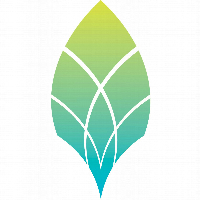Assistive Technology for Students with Learning Disabilities
Assistive technology (AT) is a broad term for “any device, piece of equipment, or product that is used to increase, maintain, or improve functional capabilities of individuals with disabilities.” These devices may include both high-tech options such as computers, touch screens, modified keyboards, on-screen keyboards, voice activated devices, or low-tech equipment such as pencil grips, graph paper, calculators and highlighters. Assistive technology, as applied to students with learning disabilities, can be seen as an “equalizer;” it allows students who learn differently to manage certain tasks that they are not able to perform without that specific technology. Assistive technology tools help learning disabled students work around challenges they face in school and at home by targeting the different academic areas they are struggling with.
In the past decade, there has been a significant shift in the way technology is used in traditional classes, from kindergarten through high school around the world. Devices such as computers, iPads, audio books, and organizational tools are being used by students without learning disabilities, so there is no longer a stigma attached to the use of these devices by learning disabled students who don’t want to be treated differently than their typically developing peers. In the world of cyberspace, with real time onscreen messaging, video conferencing, and auditory transmissions, the extent of their learning difference is minimized. Furthermore, the portability, accessibility, and cost reduction of devices has made them more widely available, even to young children and those who are not affluent with technology.
Let me briefly describe some of the assistive technology tools available to students who learn differently. Most assistive technology tools can be found on three different platforms: a desktop or laptop computer, mobile devices such a tablets or smartphones, and Chromebooks which all have AT built in.
For students with reading difficulties, including dyslexia, text-to speech (TTS) allows students to see text and to hear it being read at the same time. Audio books allow kids to hear books while reading along to reinforce comprehension. Annotation tools in programs such as Notability enable students to take notes, highlight, and write comments while reading on an electronic device. A variety of effective programs such as online websites, computer software, or iPad apps to improve phonics, decoding, and reading comprehension skills are readily available for students, who tend to be more motivated to read using these programs.
For students with writing difficulties such as dysgraphia, word processors, spell-check and speech-to-text programs all help to facilitate writing. Speech-to-text programs like Dragon Dictate allow kids to write using their voice. Word prediction programs that suggest correct spelling after only a few letters are typed help students complete their sentences. Graphic organizers such as Kidspiration, Inspiration, and Draftbuilder help students organize their thoughts by brainstorming or creating webs using pictures and flow charts. For older students, Google Docs is a powerful tool as writing can be accessed electronically from any location. This summer, I conducted distance educational therapy sessions with students all over the world using FaceTime or Skype sessions, and was able to edit my students’ writing with them on Google Docs while they were working in another location.
Assistive technology is also helpful for students with math problems such as dyscalculia. Electronic calculators, web-based tutorial programs (e.g., IXL and Kahn Academy), and iPad apps all are effective resources for students with math disabilities.
Finally, assistive technology is helpful for students with an Attention Deficit Disorder (ADHD) and Executive Functioning Deficit as there are many programs which help the learner to remain on task and to manage their time more efficiently. Electronic calendars like the Apple iCalendar, which color codes events and sends reminders, help students stay organized.
Assistive technology also provides powerful tools for teachers and educational therapists working with students with learning disabilities. With the help of AT, these individuals can customize instruction, going beyond drill and practice exercises by offering the appropriate accommodation for a particular learning need. By using appropriate tools that support a student’s strengths and increase self-esteem and independence, the student is able to adapt to learning changes.
As with any other learning tools, assistive technology does not replace effective teaching, and choosing the appropriate AT tool requires skill and understanding of the student’s learning needs. It also requires an understanding of the features of the AT tool so that the most suitable program can be chosen to fit the student’s needs. As sophisticated assistive technology continues to be developed, the needs of those children with learning disabilities will continue to be addressed more effectively.
Author:
Avlyn Kotton, MA, BCET is a board certified educational therapist who has been working in private practice in the Los Angeles region for over 20 years. She has offices in Brentwood and Malibu where she works with students from K-12. She works on implementing assistive technology programs for learning disabled students and has lectured and written articles on the use of Assistive Technology. In addition, she provides classes on Middle and High School test preparation for ISEE, SSAT, HSPT, COOP, and ACT.
www.kottonedtherapy.com












